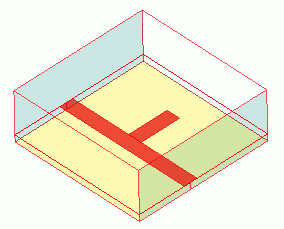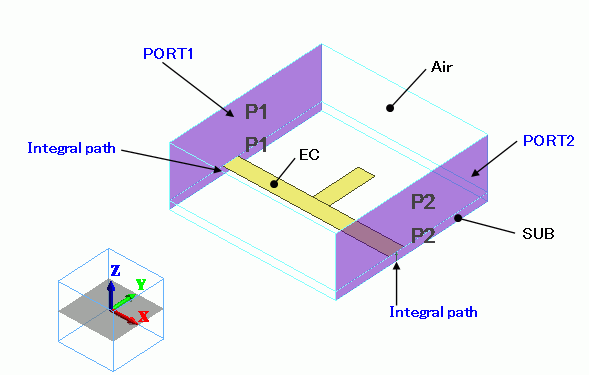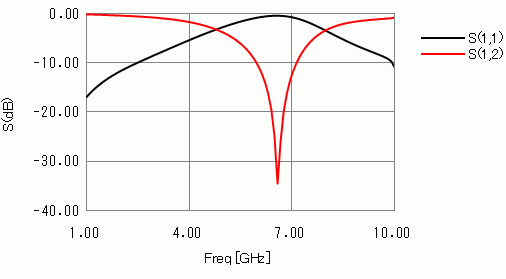
CAE Software【Femtet】Murata Software Co., Ltd.

Example8 Open Stub

General
-
An open stub formed on a dielectric substrate is characterized.
-
Unless specified in the list below, the default conditions will be applied.
-
[How to Reduce the Calculation Time]
Analysis Space
|
Item |
Settings |
|
Analysis Space |
3D |
|
Model unit |
mm |
Analysis Conditions
|
Item |
Settings |
|
Solvers |
Electromagnetic Analysis [Hertz] |
|
Analysis Type |
Harmonic analysis |
|
Options |
Select “Ignore the influence of face/edge electrode thickness” * |
* This is the default setting.
Mesh tab, Harmonic analysis tab and Open boundary tab are set as follows.
|
Tab |
Setting Item |
Settings |
|
Mesh Tab |
Element type |
2nd-order element |
|
Multigrid/Adaptive Mesh Method |
Select “Use the adaptive mesh method”. |
|
|
Frequency-Dependent Meshing |
Reference frequency: 5×10^9[Hz] Select “The conductor bodies thicker than the skin depth constitute the boundary condition.” |
|
|
Harmonic analysis |
Frequency |
Minimum: 1×10^9[Hz] Maximum: 10×10^9[Hz] |
|
Sweep Type |
Select Linear step Division number: 100 |
|
|
Sweep Setting |
Select Fast sweep S-parameters variation: 1×10^-3 |
|
|
Input |
1.0[W] |
|
|
Open boundary |
Type |
Absorbing boundary |
|
Order of Absorbing Boundary |
1st degree |
Model
An open stub is formed on a substrate (SUB) with microstriplines. A box for the ambient air is created on the substrate.
This model has two I/O ports: PORT1 and PORT2. An integration path is set up on each I/O port.

Body Attributes and Materials
You may give the thickness to the electrodes (EC bodies) in the body attribute. That does not affect the simulation.
(Related information: Analysis Condition, Electromagnetic Analysis tab, and “Ignore the influence of face/edge electrode thickness”)
|
Body Number/Type |
Body Attribute Name |
Material Name |
|
0/Solid |
SUB |
006_Glass_epoxy * |
|
1/Sheet |
EC |
003_Ag |
|
2/Sheet |
EC |
003_Ag |
|
3/Solid |
AIR |
001_Air(*) |
* Available from the Material DB
Boundary Conditions
|
Boundary Condition Name/Topology |
Tab |
Boundary Condition Type |
Settings |
|
PORT1/Face |
Electric |
I/O Port |
Reference Impedance: Select “Specify” and enter 50 ohms. Number of Modes Number of precalculated modes: 5 Number of modes used in the actual analysis: 1 Select modes: none |
|
PORT2/Face |
Electric |
I/O Port |
Same as above. |
|
Outer Boundary Condition |
Electric |
Electric wall |
|
Results
The reflection and the transmission characteristics of the open stub are shown below.


